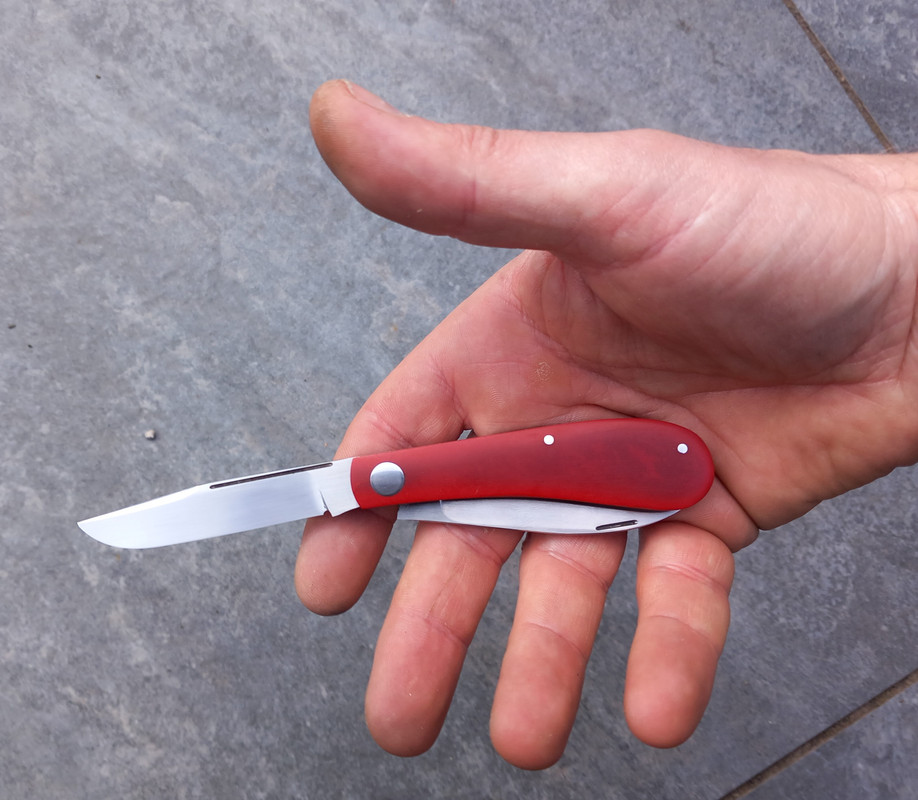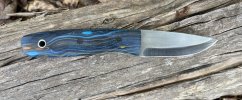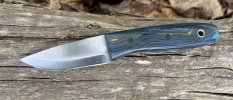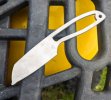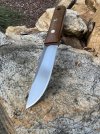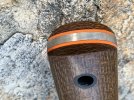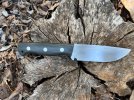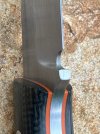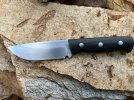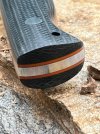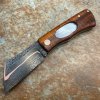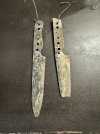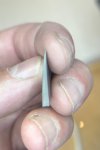bladegrinder
Knifemaker / Craftsman / Service Provider
- Joined
- May 4, 2013
- Messages
- 525
Just finished this skinner...
CPM154 blade with fine jimping on spine,
Stabilized Redwood Burl with red G10 liners, nickle silver pins and lanyard hole,
416 stainless bolsters,
sheath has frog skin inlay.


CPM154 blade with fine jimping on spine,
Stabilized Redwood Burl with red G10 liners, nickle silver pins and lanyard hole,
416 stainless bolsters,
sheath has frog skin inlay.




